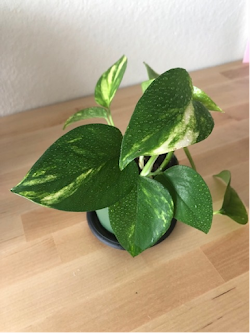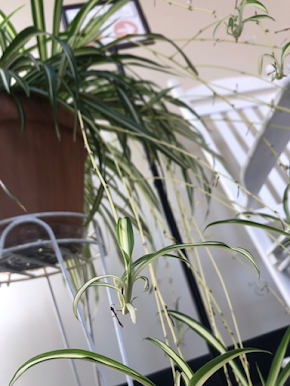As the days start getting shorter and the nights colder, we slowly begin to tuck our gardens away for the winter. Although it might feel like the first shoots of spring can’t emerge soon enough, thankfully we can still entertain our green thumbs in the meantime. How, you ask? With houseplants, of course!
Many of our common houseplants are tropical or subtropical plants, meaning that they can’t withstand our colder or freezing nighttime temperatures. With that in mind, they can actually be used as annuals in our gardens during the summer. However, more often than not, they’re found keeping cozy in our homes year-round, which is especially great for those of us, like me, who live in apartments and don’t have much outdoor space for plants!
Houseplants have a wide range of light and water requirements,
maintenance needs, and looks, so I can assure you that there’s a houseplant for
(almost) every situation, space, and person. Let’s take a look at three of the
most popular houseplants, which are all great low-maintenance options for
beginners and experts, alike!
‘Golden Pothos’ after a recent “haircut”. In lower light, the ‘Golden Pothos’ will have less of the yellow variegation.
First up is the pothos (Epipremmum aureum), a tropical evergreen climber that originates from Southeast Asia to the western Pacific. When not forming a ground cover, this plant can typically be found climbing trees by sending out aerial roots that latch onto the tree trunk. Due to its location in the canopy, the pothos is accustomed to shadier conditions and, thus, can do well in the lower-light areas of your home. Make sure to keep your pothos in well-draining soil and allow the soil to dry out between waterings to avoid root rot. Mine generally like to be watered every two weeks or so – you can always tell if your pothos needs to be watered when the leaves begin to wilt a little.
Swiss cheese plant; older leaves often have more fenestrations than do younger leaves.
The Swiss cheese plant (Monstera adansonii) is another favorite, particularly due to the fenestrations (or holes) that develop in the leaves over time. This plant comes from Central/South America and, similarly to the pothos, climbs up the canopy using aerial roots. On account of their similar growth habits, the Swiss cheese plant has the same environmental/cultural preferences as does the pothos. They can also both be easily propagated by taking cuttings of the plant and placing them in water! After several weeks, your cuttings will establish new roots and can be potted with well-draining soil. While you can propagate your plants anytime (I always have at least a few cuttings sitting on my “propagation shelf”), it may take longer for the cuttings to root in winter or you may consider using an additional light source.
A Swiss cheese plant cutting has taken root in water.
Spider plant ‘Variegatum’.
Finally, we have the spider plant (Chlorophytum comosum), which comes to us from the coastal areas of South Africa. Spider plants form clumps of thick rhizomes to store water, so they can tolerate limited/inconsistent watering and like for the soil to dry out between waterings. Unlike the pothos and Swiss cheese plant, the spider plant prefers medium to bright light, consistent with its native habitat. Spider plants can be easily propagated, but it is done differently than the latter two plants. On one hand, you can simply divide a spider plant and its rhizomes to create multiple plants. More popularly, spider plants will produce long stems (under the appropriate conditions) with plantlets (or baby spider plants) at their ends. If you wait long enough, the plantlets will produce roots while still on the stem and, at that point, can be clipped from the stem and potted.
Spider plant ‘Vittatum’ with plantlets growing from stems. The roots of the plantlets have not yet established.
So, without further ado, ditch the tropical vacation and go buy some houseplants instead (or better yet, do both)! While houseplants are lovely to look at, fun to maintain/propagate,
and can help filter the air in your home, they can be toxic to children
and pets so take caution when selecting houseplants. What's your favorite houseplant? Let us know below!
Additional references:
https://hort.extension.wisc.edu/articles/pothos-epipremmum-aureum/
https://hort.extension.wisc.edu/articles/spider-plant-chlorophytum-comosum/







No comments:
Post a Comment